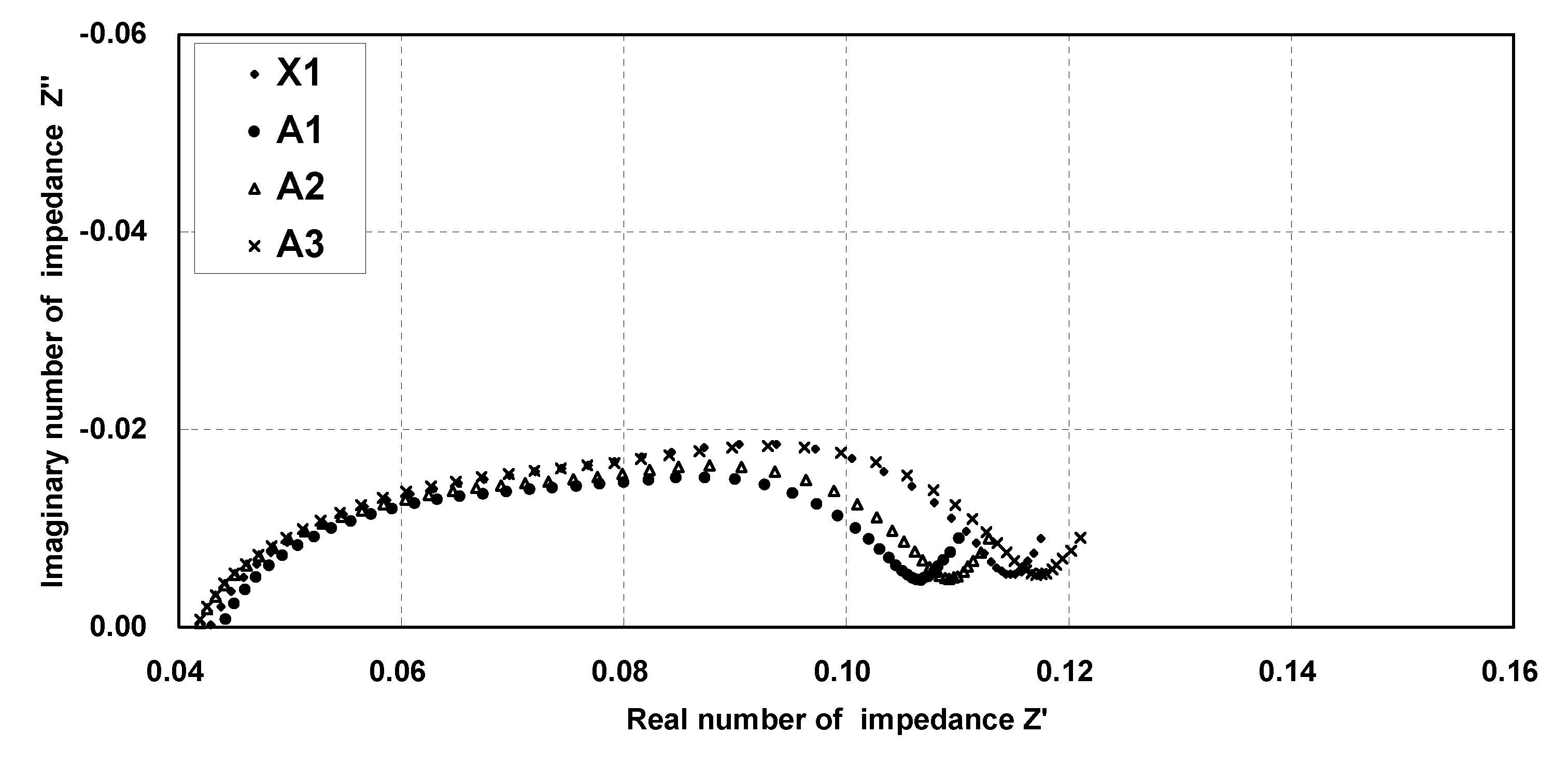Non-aqueous electrolyte secondary battery
a secondary battery, non-aqueous electrolyte technology, applied in the direction of electrochemical generators, cell components, transportation and packaging, etc., can solve the problems of reducing the service life of the positive electrode active material, and increasing the power consumption of the devi
- Summary
- Abstract
- Description
- Claims
- Application Information
AI Technical Summary
Benefits of technology
Problems solved by technology
Method used
Image
Examples
first example group
Example 1
[0050]A non-aqueous electrolyte secondary battery was fabricated according to the same manner as the just-described embodiment. The non-aqueous electrolyte secondary battery fabricated in this manner is hereinafter referred to as Battery A1 of the invention.
example 2
[0051]A non-aqueous electrolyte secondary battery was fabricated in the same manner as described in Example 1 above, except that in preparing the positive electrode, the active material, the conductive agent, PAN, and PVdF were mixed so that the mass ratio thereof became 95:2.5:0.34:2.16, respectively. It should be noted that in the positive electrode of this non-aqueous electrolyte secondary battery, the amount of PAN is 13.6 mass % with respect to the total amount of the binder.
[0052]The non-aqueous electrolyte secondary battery fabricated in this manner is hereinafter referred to as Battery A2 of the invention.
example 3
[0053]A non-aqueous electrolyte secondary battery was fabricated in the same manner as described in Example 1 above, except that in preparing the positive electrode, the active material, the conductive agent, PAN, and PVdF were mixed so that the mass ratio thereof became 95:2.5:1.0:1.5, respectively. It should be noted that in the positive electrode of this non-aqueous electrolyte secondary battery, the amount of PAN is 40.0 mass % with respect to the total amount of the binder.
[0054]The non-aqueous electrolyte secondary battery fabricated in this manner is hereinafter referred to as Battery A3 of the invention.
PUM
| Property | Measurement | Unit |
|---|---|---|
| size | aaaaa | aaaaa |
| temperature | aaaaa | aaaaa |
| voltage | aaaaa | aaaaa |
Abstract
Description
Claims
Application Information
 Login to View More
Login to View More - R&D
- Intellectual Property
- Life Sciences
- Materials
- Tech Scout
- Unparalleled Data Quality
- Higher Quality Content
- 60% Fewer Hallucinations
Browse by: Latest US Patents, China's latest patents, Technical Efficacy Thesaurus, Application Domain, Technology Topic, Popular Technical Reports.
© 2025 PatSnap. All rights reserved.Legal|Privacy policy|Modern Slavery Act Transparency Statement|Sitemap|About US| Contact US: help@patsnap.com



